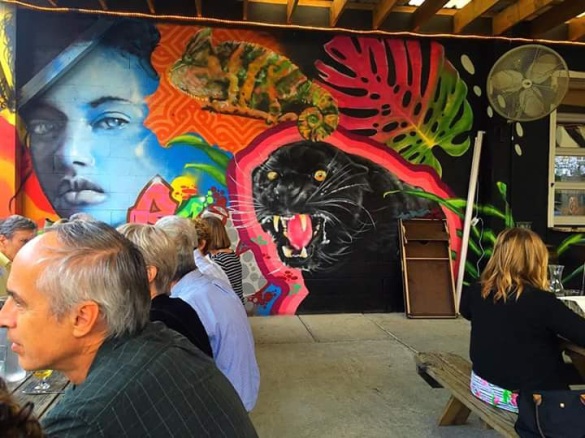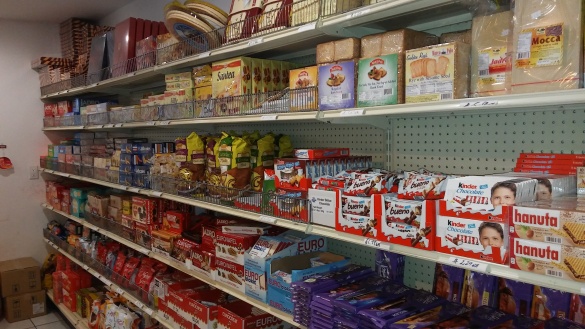by Robert Maier
 On the hot night of August 19, 1964, when I was just 13 years old, the world changed. The Beatles’ “A Hard Day’s Night” was opening at Baltimore’s 1,275 car Timonium Drive-in Theater. And I was there.
On the hot night of August 19, 1964, when I was just 13 years old, the world changed. The Beatles’ “A Hard Day’s Night” was opening at Baltimore’s 1,275 car Timonium Drive-in Theater. And I was there.
It’s hard to understand now, before 300-channel cable TV, facebook, and Instagram, the speed that Beatlemania conquered the USA. Since 1962, the Beatles had had several #1 hits in the UK, and the music biz knew that something huge was happening over there. But in one of the dumbest executive decisions ever, the large US record companies had declined to issue the Beatles’ hit songs. They did not believe that “foreign music” would interest America’s teens.
However, in 1962 the times were changing. The Billboard top 100 began to include protest folk songs from groups like Peter, Paul, and Mary and the Kingston Trio, alongside syrupy rock ‘n roll that was the staple of the 1950s. Young people were being beaten in the streets and jailed for protesting racial segregation. In big city coffee houses, folkies played acoustic guitars and experimented with beards and missed haircuts.
This new scene was discouraged by cultural gate-keepers, sure that protest music was a Communist plot, inspired by beatniks who encouraged young people to resist the American dream of a corporate job, 3 kids, and a house in the suburbs.
On December 26, 1964, Capitol Records, finally faced the fact that Beatles had sold millions of records in the UK and released “I Want to Hold Your Hand.” Demand was insatiable, and on February 1, it hit #1. They immediately followed up with “She Loves You.” Both remained #1 and #2 for months—along with their album “Meet the Beatles.”
In March, the Beatles made a brief US concert tour to New York, Washington, D.C., and Miami. It included live performances on the “Ed Sullivan Show,” watched by 70 million viewers—a record.
The Baby Boomer youth culture was born.
A movie had to be next. United Artists signed the Beatles to a 3-picture deal, thinking that movie sound tracks would mean more record sales. “A Hard Day’s Night’s” budget was just $500,000. Shot in black and white on a quickie schedule to save money, it was designed to take advantage of what UA thought would be a short-lived fad.
The low budget let the Beatles fly under the radar and choose the director, Richard Lester. He was an ex-pat experimental filmmaker, who had worked with Peter Sellers and others from the tiny British avant-garde. They didn’t want to be Hollywood. They wanted to be artists with an entirely different style and point of view.
“A Hard Days’ Night” broke the mold for movie musicals. Stuffy New York Times critic, Bosley Crowther tried to dismiss it (he claimed he couldn’t tell the Beatles apart), but admitted he was astonished at its originality and “audio-visual poetry.” The camerawork and lightning-fast editing, grabbed attention with zooms and pans, jump cuts, and strange angles, in a hand-held newsreel-like frenzy.
The Beatles’ magic seemed so accessible that me and my friends had recently bought guitars. We went to the film searching for inspiration, and boy did we find it. “A Hard Days Night” broke all the rules. It was funny, snide, ironic, and irreverent- not just a cornball romance like every US musical for the past 20 years had been. It was like a documentary that you were experiencing. This was a new world of music, free-form dancing, and playing around, a world of fun and adoring fans, where you could mess with grownups and the establishment, who were clueless about what you were up to. What a change from the tight-laced suburban 1950s. What an escape from nuclear bomb drills and forced prayers in public schools.
“A Hard Days’ Night” was the birth of the 1960s; a new era writ large on a gigantic drive-in movie screen. You could be different now. Personal freedom, experimentation, curiosity, and breaking of taboos on women’s rights, sexuality, ethnicity, religion, and individual thought could now be pursued with relish. People were invited to be different without being bullied, thrown in jail, or locked in a mental hospital.

My “Beatles” band c. 1964. Inspired by the joyful life we saw in “A Hard Day’s Night” we played rock ‘n roll at parties, and teen centers, but mostly practiced in our basements. I’m 2nd from the left.
The film birthed a new, gritty glamor of the middle class. It was shot on fire escapes, in back alleys, and messy dressing rooms. Out-of-control teenagers mobbed the streets— passionate but harmless. Old folks sneered and old-fashioned bosses lost control of the music. Bewildered journalists sparred with the young Beatles, and lost. And no one paid attention to cops foolish enough to demand order when the world was changing right in front of their faces.
Of course many thought, and still do, that personal freedom and experimentation was a terrible idea that would bring the end of Western civilization. Beatles records were burned by some. And some of those hypocritical scolds are still with us, fifty years later, trying to restore the fearful, passive America of the 1950s.
It’s ironic that “A Hard Day’s Night” is not at the top of every greatest movies list. How many films, 50 years after their release, have been so carefully restored and screened by hundreds of theaters across the USA. Don’t miss the opportunity to see it on the big screen in HD, with 5.1 surround sound. It’s a time machine.
“A Hard Days Night” plays at Studio C Cinema in the Lake Norman area, Fri, Jan. 29 & Sat. Jan. 30 at 7:30 pm; Sun, Jan. 31 at 2:30 pm. Tickets are $9.25 + tax. Click the link above for details on their complimentary pre-show wine, craft beer & cheese receptions and other screening details.
Cinema As Art: A column about international, documentary, and independent films.
Robert Maier worked in film production for more than 35 years in New York, Baltimore, and Charlotte. He has written extensively on film topics, has authored three books on film production, and is a regular contributor to The Wrap and The Underground Film Journal. Maier is also the founder and director of Studio C Cinema, a 2 year-old art house cinema in the Lake Norman area, 15 miles north of Charlotte.
The Language Academy of the Carolinas offers private lessons and small group courses in 7 different languages, including English. Check us out!




 On the hot night of August 19, 1964, when I was just 13 years old, the world changed. The Beatles’ “A Hard Day’s Night” was opening at Baltimore’s 1,275 car Timonium Drive-in Theater. And I was there.
On the hot night of August 19, 1964, when I was just 13 years old, the world changed. The Beatles’ “A Hard Day’s Night” was opening at Baltimore’s 1,275 car Timonium Drive-in Theater. And I was there.
